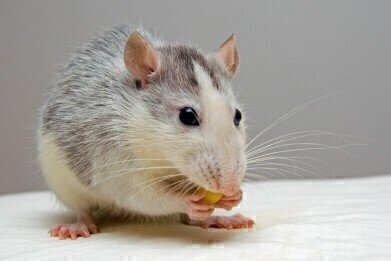GC-MS
Do Pheromones Indicate Reproductive Success? Chromatography Explores
Dec 03 2021
Pheromones play a vital role in the animal kingdom, sending out signals to members of the same species to trigger a social response. They vary from alarm pheromones (sending out a warning) to trail pheromones (leading others to a food source).
Another well-known variety are sex pheromones, which are released to attract other individuals from the same species. But can these pheromones actually tell us more about the animals that release them?
Pheromones in mice
House mice are known to have major urinary proteins (MUPs), which bind and release pheromones along with other volatile organic compounds (VOCs) as a form of chemical communication. It’s already known that this urinary scent attracts females, and that the scent from more dominant males is even more attractive.
What’s not known, however, is whether those MUPs and VOCs correlate with reproductive success. A team from the University of Veterinary Medicine Vienna decided to find out…
Monitoring excretion
Researchers studied house mice, living in large semi-natural enclosures to see how the different compounds correlated with reproductive success. After releasing mice into four indoor enclosures, they monitored the excretion of MUPs and VOCs, and recorded the relevant social behaviours for 16 weeks.
Urine was collected at 4-week intervals, with urinary proteins measured and VOCs quantified using gas chromatography coupled with mass spectrometry. The use of similar methods to analyse volatile compounds is discussed in the article, ‘Analysis and Identification of Mezcal and Tequila Aromas by Ambient Ionisation MS, GC-MS, and GCxGC-MS’.
What they found
Published in Scientific Reports, the scientists found a correlation between the concentration of VOCs and MUPs to male reproductive success. The main predictor was found to be urinary protein concentration, mainly composed of MUPs. They also found a correlation between reproductive success and HMH – a volatile male pheromone.
The other predictor of male reproductive success, as you might expect, was social status. This was similarly associated with differences in the excretion of MUPs and VOCs. It’s thought the overall effects of pheromones on reproductive success could be down to male-male competition, female mate choice or a combination of the two.
In other words, the excretion of MUPs may have deterred rival males from entering the territory of a more dominant individual. Alternatively, it could have specifically attracted females to a specific male or his territory. Or perhaps both were in play.
Interestingly, the team also compared their findings to the MUPs and VOCs from mice in standard cages – those typically used in lab studies. They found several differences, pointing towards evidence of a difference in pheromones because of the competitive conditions.
Digital Edition
Chromatography Today - Buyers' Guide 2022
October 2023
In This Edition Modern & Practical Applications - Accelerating ADC Development with Mass Spectrometry - Implementing High-Resolution Ion Mobility into Peptide Mapping Workflows Chromatogr...
View all digital editions
Events
ACS National Meeting - Fall 2024
Aug 18 2024 Denver, CO, USA
Sep 04 2024 Chiba, Tokyo, Japan
Sep 04 2024 University of Warwick, Coventry, UK
Sep 10 2024 Rockville, MD, USA
Plastics Recycling World Expo Europe
Sep 11 2024 Brussels, Belgium














